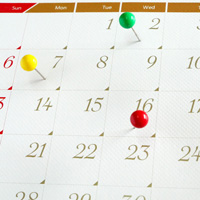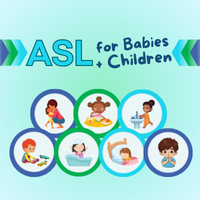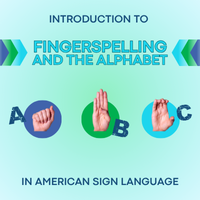The Fascinating Life of Helen Keller
Background — Growing Up and the “Miracle Worker” Years
Helen Adams Keller was born in Tuscumbia, Alabama on June 27, 1880 to Arthur and Katherine Keller. She had two older step-brothers and would later have a little sister and brother. Helen started speaking when she was just 6 months old and started walking at the age of 1.
In 1882, when she was 19 months old, she became ill with “brain fever,” now thought to be scarlet fever or meningitis. A few days after her fever passed, her mother noticed she didn’t react to the dinner bell or when a hand was waved in front of her face. Helen had become deaf and blind.
Helen tried to understand her surroundings through touch, smell, and taste. She would feel her family’s moving lips, but could not understand them. Helen and their family cook’s daughter, Martha Washington, communicated using home sign language and by the time Helen was 7, she and Martha had more than 60 signs they had invented together. However, Helen would easily become frustrated, throw tantrums, and kick and scream. Helen later wrote in her autobiography, “the need of some means of communication became so urgent that these outbursts occurred daily, sometimes hourly.” It was common in this era that children with similar disabilities and behavioral issues would have been sent to live in an asylum and many family relatives felt Helen should be locked away in an institution.
Helen’s mother Kate regained hope for her daughter after reading an article about the rehabilitation of another deaf-blind girl, Laura Bridgman. They consulted with a physician who put them in touch with Alexander Graham Bell, the inventor of the telephone. Graham Bell, who was working with deaf children at the time, met with the Kellers and recommended they visit the Perkins Institute for the Blind in Boston, Massachusetts. It was there they got connected with Anne Sullivan, one of the institute’s graduates. Anne also had severe vision problems and was a teacher who had worked with other deaf-blind students. Anne started working in the Keller home on March 3, 1887 and would continue working with Helen until her own death 49 years later in 1936. Helen worked with Polly Thomson and Winifred Corbally after Anne’s death.
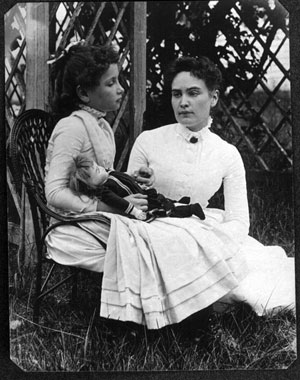 Helen Keller at 8 years old with her teacher Anne Sullivan while on vacation in Brewster, Cape Cod, Massachusetts in July 1888. (Photo Credit: Wikimedia Commons. New England Historic Genealogical Society.)
Helen Keller at 8 years old with her teacher Anne Sullivan while on vacation in Brewster, Cape Cod, Massachusetts in July 1888. (Photo Credit: Wikimedia Commons. New England Historic Genealogical Society.)
Anne began by teaching Helen fingerspelling and started with the word “doll” when showing her the doll she had brought for her as a gift. However, their first interactions were difficult. The lessons were not clicking and Helen continued to become frustrated and have tantrums. “Keller hit, pinched and kicked her teacher and knocked out one of her teeth.” Anne and Helen moved to a cottage on the family plantation so they could be isolated from the rest of the family and focus on language learning. They had a breakthrough one day when Helen understood the connection between feeling water at the water pump and Anne fingerspelling W-A-T-E-R on her hand. After that, she was thirsty for more — wanting to know the “letter name” for other objects around her. Helen learned thirty words that day and within a few months knew hundreds of words and simple sentences.
Helen wrote about her breakthrough in understanding the connection between words, language, and the world around her in her first book, the autobiography, “The Story of My Life.” This is the most well-known part of Helen Keller’s life, but the story does not end there. Helen would go on to become not only well educated, but also famous in her own right as an author and activist. She has even been said to be one of the 20th century's leading humanitarians.
A Woman of Firsts — Hungry for Education
Once she started learning, Helen never wanted to stop. In addition to the letter-by-letter spelling Anne signed in her hand, Helen also learned Braille and how to speak. Starting in May 1888, Keller attended the Perkins Institute for the Blind. “I joined the little blind children in their work and play, and talked continually. I was delighted to find that nearly all of my new friends could spell with their fingers. Oh, what happiness! To talk freely with other children! To feel at home in the great world!”
 Helen Keller's graduation from Radcliffe College in 1904. (Photo Credit: Wikimedia Commons.)
Helen Keller's graduation from Radcliffe College in 1904. (Photo Credit: Wikimedia Commons.)
Helen learned several forms of communication, including touch-lip reading, reading Braille and raised type, fingerspelling, writing block letters, and using a typewriter. She used both a braille and regular typewriter — she used a braille typewriter to prepare her manuscripts and then copied them on a regular typewriter. She also worked to develop her speaking voice and facial expressions by putting her hands on Anne’s face and throat.
In 1890 she took speech classes at the Horace Mann School for the Deaf in Boston. She attended the Wright-Humason School for the Deaf in New York City from 1894 to 1896. In 1896 she attended a girls prep school called the Cambridge School for Young Ladies to prepare for college. She then went to Radcliffe College in Fall 1900, where she graduated cum laude at the age of 24 in 1904. Helen was the first deaf-blind person to earn a Bachelor of Arts degree. She also learned to read French, German, Greek, and Latin in braille!
In June 1955, Helen was the first woman to be awarded an honorary degree from Harvard University. She also received honorary degrees from Temple University in Pennsylvania, Glasgow University in Scotland; Delhi University in India; Berlin University in Germany; and Witwatersrand University in Johannesburg, South Africa.
Passions
Author
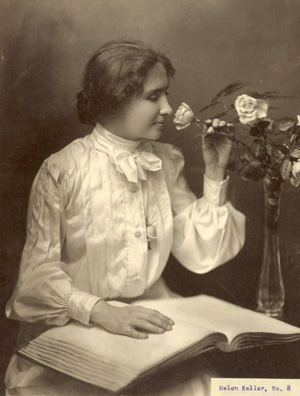 Helen Keller in 1904 (Photo Credit: Wikimedia Commons: Whitman Studio (1904): Library of Congress [Public Domain])
Helen Keller in 1904 (Photo Credit: Wikimedia Commons: Whitman Studio (1904): Library of Congress [Public Domain])
Although she accomplished many things, Keller saw herself as a writer first — her passport listed her profession as "author."
She published fourteen books, many articles and essays, and was a frequent contributor to magazines and newspapers. The Helen Keller Archives contain over 475 speeches and essays that she wrote on topics such as faith, blindness prevention, birth control, the rise of fascism in Europe, and atomic energy.
Her first book, the autobiography, The Story of My Life, which was published in 1903 when she was 24, went on to become a renowned classic and has been translated into 50 languages. It was also used as the basis for The Miracle Worker television drama, Broadway play, and film.
Lecturer / Entertainer
 Deliverance film poster / ad featuring Helen Keller in 1919. (Photo Credit: Libbie Printing Company: Samuel P. Hayes Research Library, Perkins School for the Blind, Watertown, MA)
Deliverance film poster / ad featuring Helen Keller in 1919. (Photo Credit: Libbie Printing Company: Samuel P. Hayes Research Library, Perkins School for the Blind, Watertown, MA)
In 1919, Helen Keller was involved in the making of a silent film about her life entitled Deliverance. The film depicted Keller’s life in three acts: as a child, as a young woman, and present day in 1919. Two different actresses played Keller as a child and as a young woman and she played the role of her present day self. The movie covered much of the same story as the more recent and well-known The Miracle Worker movies. One reviewer commented, “Much of Deliverance is clumsy, but every frame of this movie is fascinating, and some of it is positively riveting… because this is a silent film, we are all necessarily deafened along with Ms. Keller, and cannot fully grasp the isolation of her own silent existence within the world of hearing people.” Keller was unhappy with the glamorized nature portrayed of her life in the movie.
Keller was offered a chance to join Vaudeville as a teenager (Vaudeville is a genre of entertainment featuring specialty acts and the Vaudeville circuit included many venues across the U.S.), but turned down the opportunity because her family and her teacher, Sullivan, did not think it was a good idea. Keller eventually convinced Sullivan. Keller performed on the Vaudeville circuit from 1920 to 1924 as a lecturer with Anne Sullivan. Before joining Vaudeville, Helen and Anne had been traveling nearly every day from town-to-town to give lectures on the Chautauqua adult-education lecture circuit. In addition to a better income, doing Vaudeville shows allowed them to stay in the same town for a week at a time. It also gave Keller the stage to re-tell her story in the way she wanted. She was disappointed in the way the movie Deliverance had glossed over many details of her life, including her political views. She also hoped to use the opportunity of a wider audience to educate others on the struggles of the disabled.
The public was intrigued by Keller and wanted to see for themselves if she could do all of the things she was credited for — most deaf-blind people during this time were institutionalized and assumed to be “retarded.” Rumors also circulated that Keller plagiarized, that her books were written by ghost authors, and that Sullivan and her husband used Keller to spread their own views. Keller was billed as “The Star of Happiness” and her show was a success. The audience was surprised to hear her speak and the most popular part of the show was the Q & A at the end, where Keller got to showcase her quick wit and highlight her socialist views. When asked if talking tired her, Keller responded, “Did you ever hear a woman who tired of talking?”
In 1954, a documentary about Helen's life entitled The Unconquered was released in theaters. The film was slightly revised and shown on television in 1955 as Helen Keller in Her Story. The film won the Academy Award for Best Documentary in 1956, and at age 75, Keller accepted the Oscar. Keller is the only person to win an Academy Award for appearing in a documentary about her life, and also have someone else win an Oscar for portraying her in another movie about her life.
The well-known story, The Miracle Worker, based on Keller’s autobiography, was made into a Broadway play (1959-1961; 1994; 2010), television drama (1957; 1979; 2000), and film (1962). It was even adapted for Spanish (TVE, 1978) and Italian (RAI, 1968) television.
The Miracle Worker story won many awards. The original 1959 play ran for 719 performances and won the 1960 Tony Award for Best Play, in addition to Best Direction, Best Stage Technician, and Best Actress. The 1962 film won Academy Awards for Best Actress and Best Supporting Actress. Patty Duke, who won the Oscar for Best Supporting Actress, is the only actress to win an Oscar for a role in which only one word is said (she says, “Water!” in the famous scene in the movie when Keller understands that what she is touching at the pump is called water).
Traveler
Helen was a world traveler and visited a total of 39 countries across 5 continents. She spent many of her later years traveling around the world in order to raise money and awareness for the blind and other social issues.
From 1946 to 1957, she went around the world as a representative for the American Foundation for the Blind and the American Foundation for the Overseas Blind (now known as Helen Keller Worldwide), speaking about the experiences and rights of people who are blind. In 1948, she was sent to Japan as America's first Goodwill Ambassador. Her visit was a huge success; up to two million Japanese came out to see her and her appearance drew considerable attention to the plight of Japan's blind and disabled population. In 1955, when she was 75 years old, she embarked on one of her longest and most grueling journeys: a 40,000-mile, five-month-long tour through Asia.
Loves
Keller had a deep love for learning and sharing knowledge. She sought an education, was an avid reader and follower of politics and world events. Among her favorite books were philosophy texts and volumes of poetry. She also enjoyed studying history and economics, as well as foreign languages including French, German, Greek, and Latin. She became an author, lecturer, and entertainer so she would have a platform to share her life story and political views to advocate for others.
Helen was great fan of music. She could “hear” vibrations of both instruments and voice. Shortly before World War I, with the assistance of the Zoellner Quartet she determined that by placing her fingertips on a resonant tabletop she could experience music played nearby.
She loved dogs. She introduced the Japanese Akita breed to America after receiving her first Akita dog, which was a gift from police officer Ichiro Ogasawara during one of her trips to Japan.
An interesting story that is not included in many biographies about Helen Keller is her love affair at the age of 36. Anne Sullivan and Keller worked closely together and lived together. In 1916, Sullivan was away seeking treatment and recuperating from what was thought to be tuberculosis. Peter Fagan, a 29-year-old Boston Herald reporter, became Keller’s secretary — and they fell in love. However, 1916 society, including Keller’s family and Sullivan, did not think women with disabilities should get married or have normal romantic desires. Fagan and Keller had taken out a marriage license and had planned to elope. They tried twice to run off together, but were stopped by Keller’s family and teachers. The third time, Keller waited on the dark porch with her packed bag, but Fagan never showed up. Some of Fagan’s family say the family legend is that Fagan was threatened by the Keller family and he retreated because he feared for his life. They also say Sullivan was jealous of anyone else getting close to Keller and insisted the relationship end.
Celebrity
Helen became a celebrity among celebrities and she met a number of influential and famous people.
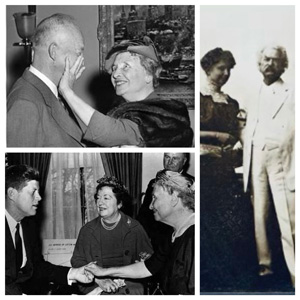 Helen Keller with celebrities. Top-left: 1. President Eisenhower (1953), Bottom-left: 2. President Kennedy (1961), Right: 3. Mark Twain (1909). (Photo Credit: 1. 1953: Wikimedia Commons: Eisenhower Presidential Library [Public Domain], 2. 1961, April 8: Wikimedia Commons: John F. Kennedy Presidential Library and Museum [Public Domain], 3. 1909: Lyon, Isabel. W. T. H. Howe: The New York Public Library [Public Domain])
Helen Keller with celebrities. Top-left: 1. President Eisenhower (1953), Bottom-left: 2. President Kennedy (1961), Right: 3. Mark Twain (1909). (Photo Credit: 1. 1953: Wikimedia Commons: Eisenhower Presidential Library [Public Domain], 2. 1961, April 8: Wikimedia Commons: John F. Kennedy Presidential Library and Museum [Public Domain], 3. 1909: Lyon, Isabel. W. T. H. Howe: The New York Public Library [Public Domain])
Among her friends were author Mark Twain and inventor Alexander Graham Bell. She made quite an impact on Mark Twain. They met at a lunch held for her in New York in 1895. He was so impressed with her that he encouraged his benefactor to fund her education, which he did. The financial support allowed her to pursue a college education, becoming the first deaf-blind person to earn a Bachelor of Arts degree.
Twain once said, "The two greatest characters in the 19th century are Napoleon and Helen Keller. Napoleon tried to conquer the world by physical force and failed. Helen tried to conquer the world by power of mind — and succeeded!” Perhaps inspired by Keller, one of Twain’s famous quotes is, “Kindness is a language which the deaf can hear, and the blind can see.”
Alexander Graham Bell, inventor of the light bulb, helped connect Helen's family to the Perkins Institute for the Blind, where they found Anne Sullivan and where Helen later attended school. She dedicated her first book, The Story of My Life, to him: “To ALEXANDER GRAHAM BELL who has taught the deaf to speak and enabled the listening ear to hear speech from the Atlantic to the Rockies, I dedicate this Story of My Life."
Helen met twelve U.S. presidents — every U.S president from Grover Cleveland to John F. Kennedy. She also met leaders of other countries, including the Queen of England, British Prime Minister Winston Churchill, Indian Prime Minister Jawaharlal Nehru, Prime Minister of Israel Golda Meir, and Japanese Emperor Hirohito.
Additionally, she met many famous people, including Albert Einstein, Henry Ford, Andrew Carnegie, Eleanor Roosevelt, Will Rogers, Emma Goldman, Eugene Debs, Charlie Chaplin, Katharine Cornell, Jo Davidson, Martha Graham, Enrico Caruso, and Dr. Oliver Wendell Holmes.
Using Fame to Make A Difference
Keller said, “So long as you can sweeten another’s pain, life is not in vain.” She lived by that mantra and is remembered as a social activist who fought for the rights of others. What many do not know is that she had strong political views, which were considered radical for the time.
She was a suffragette who advocated for women’s right to vote and access to birth control.
She was a pacifist and protested the U.S. involvement in World War I. She supported troops by visiting wounded veterans in military hospitals around the country during and after WWII.
She was an early supporter of the National Association for the Advancement of Colored People (NAACP), fighting particularly for the rights of blind African Americans.
She joined the Socialist Party and fought for workers' rights. She wrote socialist pieces and was such a controversial author that the FBI did surveillance on her, and the Nazis burned a collection of her political essays in 1933. Media that once supported Keller lashed out at her for her socialist beliefs. She remarked on the change of attitude from one editor, “At that time the compliments he paid me were so generous that I blush to remember them. But now that I have come out for socialism he reminds me and the public that I am blind and deaf and especially liable to error.”
Helen Keller co-founded the American Civil Liberties Union (ACLU) in 1920.
She helped to found Helen Keller International in 1915, originally called The Permanent Blind War Relief Fund (and later called the American Braille Press before becoming Helen Keller International). It is dedicated to preventing blindness and reducing malnutrition. In 1946, Helen was appointed counselor on international relations and began traveling the world to advocate on behalf of those with vision loss.
In 1921, Helen joined the American Federation for the Blind (AFB) and worked for the organization for over 40 years. As a result of her travels across the United States, state commissions for the blind were created, rehabilitation centers were built, and education was made accessible to those with vision loss.
She testified before Congress, strongly advocating to improve the welfare of blind people.
In 1925, Keller addressed the Lions Club at their International Convention in Cedar Point, Ohio. She challenged Lions to become “knights of the blind in the crusade against darkness.” Since then, the Lions have worked to aid the blind and visually impaired. They have helped millions of people worldwide and continue to have sight programs designed to prevent blindness, restore eyesight and improve eye health and eye care.
Legacy
Helen was famous from the age of 8 for overcoming great obstacles in order to learn to communicate and was renowned until her death in 1968 as an author and activist who fought for the rights of others. Known as one of the 20th century's leading humanitarians, Helen was named one of the most important people of the 20th century by Life magazine.
She received many awards during her lifetime. She won an Oscar for Best Documentary in 1956 for the story of her life and an Academy Award and several Tony awards have been given for adaptations to The Miracle Worker, which is also about her life. She received the Theodore Roosevelt Distinguished Service Medal in 1936 and in 1964 was awarded the highest honor that an American civilian can receive, the Presidential Medal of Freedom. She later received the Brazilian Order of the Southern Cross (1952), the Philippines' Golden Heart, the French Legion of Honor (1952) and Japan's Sacred Treasure. She was elected to the Women's Hall of Fame at the New York World’s Fair in 1965, the Alabama Women’s Hall of Fame in 1971, and the National Women’s Hall of Fame in 1973. A U.S. Stamp with a picture of Keller and Sullivan was issued in 1980. Other countries have issued stamps with her image as well, including Brazil, Spain, India, Venezuela, Mauritius, Guyana, Republic of Maldives, Liberia, Nicaragua, and Japan.
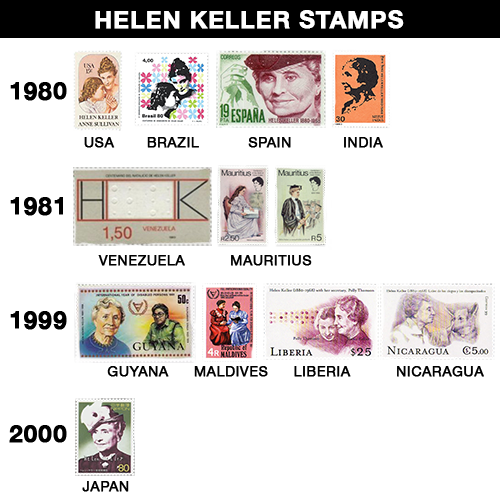
Helen Keller Stamps
Her birthplace, a plantation called Ivy Green in Tuscumbia, Alabama, is now a museum. The City of Tuscumbia hosts an annual Helen Keller Festival the last week of June. Her June 27th birthday is commemorated as Helen Keller Day in the state of Pennsylvania and was authorized at the federal level by presidential proclamation by President Jimmy Carter in 1980, for the 100th anniversary of her birth.
Keller died in her sleep on June 1, 1968, just a few weeks before her 88th birthday. Her ashes were placed next to her companions, Anne Sullivan Macy and Polly Thomson, in St. Joseph's Chapel of Washington Cathedral.
See It Signed - Example Sentence
See this example sentence about Helen Keller:
ASL Gloss: H‑E‑L‑E‑N K‑E‑L‑L‑E‑R H‑K HERSELF FAMOUS DEAF‑BLIND WOMAN. SHE AUTHOR TWO OF THREE LECTURER THREE OF THREE ACTIVIST.
English Example: Helen Keller was a famous deaf‑blind woman. She was an author, lecturer, and activist.
Become a Member of Signing Savvy to see more example sentences signed, including example sentences related to Deaf Culture.
More on Helen Keller
Books by Helen Keller
You can find these books on Amazon:
- The Story of My Life
- Her classic autobiography, often assigned in schools and essential reading to understand her early life and breakthrough with Anne Sullivan.
- The World I Live In and Optimism: A Collection of Essays
- A deeper reflection on her sensory world, thoughts, and imagination. A great companion to her autobiography.
- Out of the Dark: Essays, Letters, and Addresses on Physical and Social Vision
- A lesser-known but powerful collection revealing Keller’s views on socialism, workers' rights, and social justice.
- Light in My Darkness
- Originally published as My Religion (1927). Discusses her spiritual beliefs and connection to Emanuel Swedenborg's teachings.
- Three Days to See
- A powerful essay imagining what she would do if given sight for just three days—full of wonder, perspective, and emotional insight.
Biographies About Helen Keller
You can find these biographies on Amazon:
- Helen Keller: A Life by Dorothy Herrmann
- A comprehensive and well-researched biography for adult readers.
- Beyond the Miracle Worker: The Remarkable Life of Anne Sullivan Macy and Her Extraordinary Friendship with Helen Keller by Kim E. Nielsen
- A richly researched biography of Anne Sullivan Macy that explores her complex life, her teaching philosophy, and her deep, evolving relationship with Helen Keller. This book reframes the popular narrative, giving readers insight into both women's inner lives.
Children's Books About Helen Keller
You can find these children's books about Helen Keller on Amazon:
- Helen Keller: The World at Her Fingertips
- Series: I Can Read, Level 2 (2019)
- A simple and engaging introduction for early readers learning to read on their own.
- Helen Keller: Courage in the Dark
- Series: Step Into Reading (1997)
- An early reader that highlights the challenges and triumphs in Helen’s life, ideal for beginning independent readers.
- Helen Keller (National Geographic Kids Readers, Level 2)
- Series: National Geographic Kids (2017)
- Visually engaging with photographs and facts—perfect for curious readers who enjoy nonfiction with vivid visuals.
- Who Was Helen Keller?
- Series: Who HQ (2003)
- A classic entry in the popular biography series for young readers, offering a clear narrative and historical context.
- I Am Helen Keller
- Series: Ordinary People Change the World (2015)
- Told in a playful, comic-style format that brings Helen’s story to life with empathy and accessibility for elementary-aged kids.
- Helen Keller
- Series: Little People, Big Dreams (2022)
- Beautifully illustrated and inspiring, this book shares Helen’s journey with younger readers in a gentle, dream-focused way.
- The Story of Helen Keller: An Inspiring Biography for Young Readers
- Series: The Story Of Biographies (2020)
- A great middle-grade option that blends storytelling with lessons on determination and accessibility.
- Helen Keller Book for Curious Kids: The True Story of a Brave Girl Who Found Her Voice
- Series: Great Minds for Curious Kids (2025)
- A newer title that speaks directly to inquisitive readers looking to explore Helen’s life and legacy in greater detail.
Movies
You can find these movies on Amazon Prime Video:
- The Miracle Worker (Original, 1962 Version)
- The Miracle Worker (Remake, 2000 Version)
- Becoming Helen Keller (PBS Documentary, 1986)
Resources
Adapted from: Cartwright, B. & Bahleda, S. (2015). Did You Know? Helen Keller, Deaf-Blind Social Activist. In Lessons and Activities in American Sign Language (p. 8). RID Press.
- American Foundation for the Blind (AFB). (n.d.). Helen Keller Biography. Retrieved March 15, 2016 from http://www.afb.org/info/about-us/helen-keller/biography-and-chronology/biography/1235
- American Foundation for the Blind (AFB). (n.d.). Helen Keller Biography. Helen Keller Kids Museum Online. Retrieved March 15, 2016 from http://braillebug.afb.org/helen_keller_bio.asp
- American Foundation for the Blind (AFB). (n.d.). Recognition of the Braille Code: Helen Keller in Paris. Retrieved March 15, 2016 from http://www.afb.org/louisbraillemuseum/braillegallery.asp?FrameID=192
- American Printing House for the Blind, Inc. (APH). (n.d.). Helen Keller.Hall of Fame: Leaders and Legends of the Blindness Field. Retrieved March 15, 2016 from https://www.aph.org/hall/inductees/keller
- Biography.com Editors (n.d.). Helen Keller Biography. A&E Television Networks: Biography.com. Retrieved March 15, 2016 from http://www.biography.com/people/helen-keller-9361967
- Buffamonte, Christina (2012, April 09). 10 Things You Didn't Know About Helen Keller: Surprising facts about this amazing woman. Good Housekeeping. Retrieved March 15, 2016 from http://www.goodhousekeeping.com/life/inspirational-stories/g488/facts-about-helen-keller/
- Chua, C. N. (n.d.). Helen Keller: 1 and Helen Keller: 2. Atlas of Ophthalmic Philately. http://www.mrcophth.com/ophthalmologyonstamps/helenkeller/mainpage.html and http://www.mrcophth.com/ophthalmologyonstamps/helenkeller2/mainpage.html
- F. Gwynplaine MacIntyre (2003, August 20). See me, hear me, touch me [Review of the movie Deliverance]. IMDb (Internet Movie Database). Retrieved June 20, 2016 from http://www.imdb.com/title/tt0010061/reviews?ref_=tt_ov_rt
- Helen Keller. (n.d.). In Wikipedia. Retrieved March 15, 2016 from https://en.wikipedia.org/wiki/Helen_Keller
- The Helen Keller Birthplace Foundation. (n.d.). Helen Keller Birthplace “Ivy Green.” Retrieved March 15, 2016 from http://www.helenkellerbirthplace.org
- Helen Keller Festival Board. (n.d.). Helen Keller Festival. Retrieved March 15, 2016 from http://www.helenkellerfestival.com
- Hingsburger, Dave (2012, March). Helen Keller and Peter Fagan. Of Battered Aspect. Retrieved June 20, 2016 from http://davehingsburger.blogspot.com/2012/03/helen-keller-and-peter-fagan.html
- Jones, Josh (2015, May 13). Mark Twain & Helen Keller’s Special Friendship: He Treated Me Not as a Freak, But as a Person Dealing with Great Difficulties. Open Culture. Retrieved on June 20, 2016 from http://www.openculture.com/2015/05/mark-twain-helen-kellers-special-friendship.html
- Keller, Helen (1905). "The Story of My Life". New York: Doubleday, Page & Company.
- Lions Club International. (n.d.). Helen Keller. Retrieved June 16, 2016 from http://www.lionsclubs.org/EN/who-we-are/mission-and-history/helen-keller.php
- Lions Club International. (n.d.). Sight Programs. Retrieved June 16, 2016 from http://www.lionsclubs.org/EN/how-we-serve/health/sight/index.php
- Mark Twain, as quoted in A.A.S.A. Official Report, (1937) by the American Association of School Administrators, p. 65. Retrieved from Helen Keller Wikiquote on June 20, 2016 from https://en.wikiquote.org/wiki/Helen_Keller
- The Miracle Worker (1962 film). (n.d.). In Wikipedia. Retrieved June 20, 2016, from https://en.wikipedia.org/wiki/The_Miracle_Worker_(1962_film)
- The Miracle Worker (play). (n.d.). In Wikipedia. Retrieved June 20, 2016, from https://en.wikipedia.org/wiki/The_Miracle_Worker_(play)
- Miss Cellania (2012, November 12). Helen Keller: Vaudeville Star. Neatorama. Retrieved June 20, 2016 from http://www.neatorama.com/2012/11/12/Helen-Keller-Vaudeville-Star/
- National Women’s Hall of Fame. (n.d.). Helen Keller. Retrieved March 15, 2016 from https://www.womenofthehall.org/inductee/helen-keller/
- Order of the Southern Cross. (n.d.). In Wikipedia. Retrieved March 15, 2016 from https://en.wikipedia.org/wiki/Order_of_the_Southern_Cross
- Perkins School for the Blind. (n.d.). Helen Keller FAQ. Retrieved March 15, 2016 from http://www.perkins.org/history/people/helen-keller/faq
- Royal National Institute of Blind People (RNIB). (n.d.). Who was Helen Keller? Retrieved March 15, 2016 from https://help.rnib.org.uk/help/daily-living/helen-keller
- Soylent Communications. (n.d.). Helen Keller. NNDB: Notable Names Database. Retrieved March 15, 2016 from http://www.nndb.com/people/074/000046933/
- Sugg, Diana K. (1998, August 9). Hellen Keller: yearning for an ordinary life. The Baltimore Sun. Retrieved June 20, 2016 from http://articles.baltimoresun.com/1998-08-09/features/1998221032_1_helen-keller-hellen-keller-annie-sullivan
- Sulton, Rosie (2012, July 4). Helen Keller’s Secret Love Life. The Huffington Post. Retrieved June 20, 2016 from http://www.huffingtonpost.com/rosie-sultan/helen-keller_b_1477393.html
- The Unconquered. (n.d.). In IMDb (Internet Movie Database). Retrieved June 20, 2016 from http://www.imdb.com/title/tt0048157/
- United States Postal Service. (n.d.). Women Subjects on United States Postage Stamps. Retrieved March 15, 2016 from http://about.usps.com/who-we-are/postal-history/women-stamp-subjects.htm
- Winter, Bill (2016, February 25). Helen Keller’s forgotten Oscar. Perkins School for the Blind. Retrieved June 20, 2016 from http://www.perkins.org/stories/blog/helen-kellers-forgotten-oscar
ADVERTISEMENTS
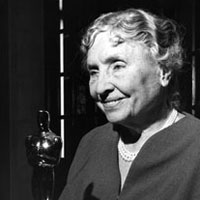 12 Facts You Probably Don’t Know About Helen Keller
12 Facts You Probably Don’t Know About Helen Keller Braille Explained
Braille Explained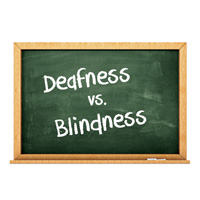 The Mysterious Confusion Between Deafness and Blindness
The Mysterious Confusion Between Deafness and Blindness Clearing Up the Confusion Between Translators, Interpreters, and Interveners
Clearing Up the Confusion Between Translators, Interpreters, and Interveners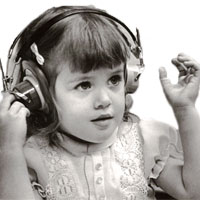 Debbie Wright's Story: A Journey of Discovery with Usher Syndrome and Being Deafblind
Debbie Wright's Story: A Journey of Discovery with Usher Syndrome and Being Deafblind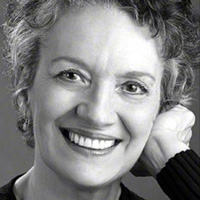 Living Loud: Phyllis Frelich - Actress, Innovator, and Tony Award Winner
Living Loud: Phyllis Frelich - Actress, Innovator, and Tony Award Winner


